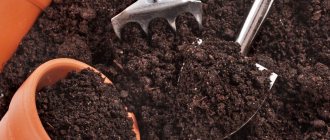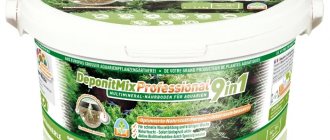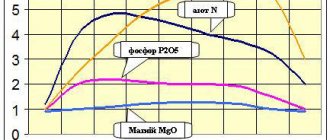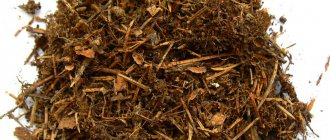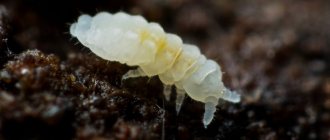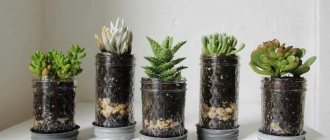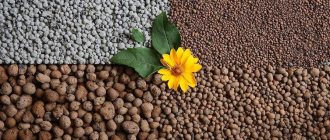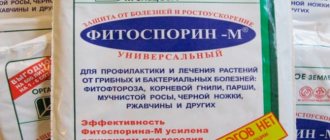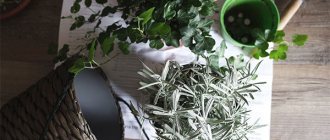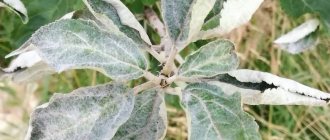Benefits of homemade soil
The quality of ready-made soil mixtures can often be called into question. At home, it is difficult to check whether the necessary requirements for the soil are met:
- percentage of components required by a particular plant;
- carrying out disinfection;
- acidity indicator.
Land for flowers
Moreover, experienced gardeners prefer to mix soil, not only based on the needs of the type of plant for which this soil is intended, but also based on its size, age, and conditions of detention.
Charcoal
It has long been known that charcoal has antiseptic properties. It can be added to the vase where the bouquet stands, or to the water where the cuttings are placed for rooting. The presence of coal allows the water to remain clean and not rot. If the cuttings are rooting in a hard substrate, dip the cuttings in charcoal powder before planting them, this will also help prevent the cuttings from rotting. Charcoal can be ground to a powder and used in substrates intended for plants such as orchids or cacti, which have thick, delicate roots that are very sensitive to moisture and can rot quickly.
How to make the perfect soil with your own hands
Pests of indoor plants and diseases of indoor flowers
You can prepare a good soil mixture at home from natural or purchased ingredients. In the first case, you will have to additionally check the acidity level of the soil, while on the packaging of store-bought mixtures the acidity level is indicated by the manufacturer.
Main soil components
Among the main components used in preparing soil for indoor plants are turf, coniferous, humus, compost, leaf soil, as well as peat and sand. In addition to these, there are other components that are mixed into the soil to improve its qualities:
- Perlite or vermiculite allows you to balance the composition, making it permeable to air and moisture.
- Coal is necessary to absorb excess moisture and as a preventive measure against certain pathogens.
- Chalk or lime replenishes the lack of calcium in the soil and reduces its acidity.
- Expanded clay, broken brick or clay shards are needed to create a drainage layer.
- Coconut fiber or bark is added to substrates for epiphytic plants and those that prefer loose soils.
- Sphagnum disinfects the soil and is able to retain moisture.
- Mole soil collected from mounds near animal burrows is good because it is completely cleared of weed seeds, insects and their larvae.
Components for soil mixture
How to disinfect flower soil
Soil brought from a garden or forest may contain microorganisms, bacteria or insect pests. Therefore, when mixing the soil yourself, you often cannot do without a disinfection procedure.
Garden soil can be treated with Fitosporin, Gamair or Alarin. This will destroy bacteria and fungal infections, making the composition comfortable for indoor plants.
Advice! You can resort to heat treatment, which comes down to two main methods: steaming in the oven at a temperature of at least 120 ⁰C and freezing (keeping on the balcony in winter).
Additional components
As was said at the beginning, all components of a multi-component soil for indoor plants fall into the categories of basic and additional.
Additional components are not required in the soil mixture, but can significantly improve the quality of the soil, and at the same time help the plant remain healthy and strong.
Most recommended by experts as additional ones for creating a high-quality soil mixture:
- horn meal - These are the horns and hooves of cattle crushed into powder, which in this form have proven themselves to be excellent as a phosphorus fertilizer. You may also come across horn shavings, but their action is slower, and therefore flour is preferable for indoor plants. It can be used both in dry form - added to the soil at a rate of 1:30, and (less often) in liquid form - soak 1 kg of flour in 1 liter of water.
- sphagnum - a substance close to peat, moss that grows in swamps. It is from sphagnum that high-moor (as we remember, acidic) peat is formed. Other names: sphagnum moss, peat moss. Loosening the soil, at the same time it is able to retain moisture in it. And since it has a low pH value - only 4, it contributes to the oxidation of the soil to a certain extent.
- wood ash - on the contrary, when added to the soil, it reduces its acidity, therefore it is also used as a regulator of this indicator. And also - as a potassium fertilizer. In addition to potassium, it contains iron, phosphorus, magnesium and other microelements beneficial for plants. Like horn flour, it can be added to the soil in dry form, but in a ratio of 1:50, or in liquid form - water the plant every 10-14 days with a composition of 25 grams. (or 3 tablespoons) of ash, infused for a week in 1 liter of water.
- charcoal - an excellent “doctor” for plants: in case of rotting of the roots, it is added in small quantities to the soil during plant replanting, and it is also sprinkled on wounds on any parts of the plant. Charcoal also helps loosen the soil and increases its moisture permeability. It is sold in the “flower” departments of stores, however, in the absence of a special one, charcoal for grilling is also suitable, but it will need to be crushed into small (up to 1 cm) pieces. In the most extreme case, charcoal, like ash, can be burned yourself.
- conifer bark - a desirable soil additive for orchids, epiphytes, ferns and anthuriums. Usually prepared on its own. To do this, the bark in the required amount is removed from old pines or spruces, crushed and pre-boiled for half an hour in water. Then it is added to the soil mixture.
Read also Bordeaux mixture. Composition, preparation, tips for use
Main types of soil
Why do the leaves of indoor flowers turn yellow - what to do?
To mix soil that is suitable for growing a particular plant, you need to understand the qualities and properties of each type of soil. In this case, it does not matter at all whether the soil for indoor flowers was purchased or dug up with one’s own hands.
Light, medium and heavy soil mixtures
Although there is so-called "universal soil", it may not meet the needs of many plants grown in apartments. All soil mixtures should be divided into light, medium and heavy. Light soil mixtures are suitable for cacti and succulents. The light mixture consists of the following components:
- 4 parts peat;
- 2 parts of garden soil;
- 1 part of leaf or turf soil;
- 4 parts sand;
- a small amount of agroperlite, vermiculite, charcoal, drainage material.
Soil mixtures with a medium density composition are more versatile. They are used for growing decorative foliage and flowering plants in pots. The average mixture can be obtained by combining the following components in certain proportions:
- 4 parts peat;
- 3 parts of garden soil;
- 2 parts of turf land;
- 1 part compost or humus;
- 3 parts sand;
- some vermiculite and charcoal.
Preparation of earthen mixture
Heavy mixtures are recommended for large plants grown in tubs. These include tropical palms, vines, ferns, and azaleas. The composition of the heavy mixture is:
- 6 parts peat;
- 4 parts garden soil;
- 3 parts of leaf or turf soil;
- 2 parts sand;
- 2 parts compost or humus (can be replaced with vermicompost);
- additionally - bark, pine needles, sphagnum, charcoal.
Humus soil
This type of soil is created by mixing rotted manure with soil in a special hole or pile. A variety of this type of soil is vermicompost - the most fertile additive to soil mixtures for any indoor flowers. Essentially, this is the same humus, but produced using a humus worm.
Sod land
The type of soil taken from the place where various grasses grow is preferable - cereals or legumes, since such soil has the highest nitrogen content. However, the soil dug up from the top layer of the meadow is considered quite suitable.
Coniferous land
An acidic type of soil harvested where coniferous trees grow. Such soil is necessary for some indoor plants - for example, Saintpaulias, azaleas, gloxinias, begonias - as the main component of the soil mixture.
Leaf ground
The most ordinary forest soil or soil from a personal plot, taken from under a fruit tree, is very nutritious due to the rotted leaves it contains. It is often recommended to use leaf soil without other types of soil, only with the addition of a small amount of sand or perlite.
Sand
It is almost impossible to do without this component when preparing soil mixtures for various house flowers. Although sand does not have nutritional properties, it makes the soil looser and more permeable to moisture and air. However, it is worth considering that only river sand is suitable, and in no case construction sand.
Peat soil
Peat is the main component of finished soils, making them lighter and looser. Its disadvantage is that after it dries completely, it absorbs moisture very poorly, as a result of which watering the plant does not give the desired result - the water passes right through the substrate without staying in it.
Important! To prevent the plant from dying from drying out, it is advisable not to use this type of soil in its pure form.
Pozzolan
Pozzolan is another silica of volcanic origin. Due to its hygroscopic quality (it can retain moisture), pozzolan has found its use in the production of soils. When added to substrates, pozzolan is crushed into small particles, thanks to which the substrate in the pot does not cake.
Large pozzolan is added to soil mixtures intended for flower pots or containers with a water reservoir. Also, large pozzolan can be used as drainage instead of expanded clay. Pozzolan granules create more intense air exchange in such containers, unlike expanded clay, to which the raw mixture sticks very quickly.
Besides drainage, pozzolan has another use. In order to always have moist air around the plants, they need to be placed in trays filled with pre-soaked pozzolan. Gradually drying out, the pozzolan will evaporate the moisture, and the plants will be able to enjoy the moisture without the risk of their roots rotting.
Soil acidity for indoor flowers
Soil for Dracaena - which one is needed and how to choose
Knowing which trees and flowers like acidic soil and which ones like neutral or alkaline soil, you can mix the soil suitable for them. Typically, peat soil is acidic, turf and leaf soil are neutral (pH 5.0 - 5.5) or have a slightly alkaline reaction, and clay soils are alkaline (pH 5.5-6.5).
Soil acidity for home flowers
What indoor flowers love acidic soil, list:
- azalea;
- aspidistra;
- bougainvillea;
- ginura;
- blueberry;
- hydrangea;
- dichorysandra;
- camellia;
- coffee;
- laurel;
- vines (gloriosa, passionflower, clerodendrum, hoya);
- oleander;
- palm trees (dracaena, coconut, Livistona, rapis, date, chamedorea, howea, cycas yucca);
- ferns;
- pelargonium;
- rhododendron;
- ficus;
- fuchsia;
- cyclamen;
- Sheffler.
List of plants that like alkaline soil:
- anthurium;
- balsam;
- begonia;
- gloxinia;
- dieffenbachia;
- calathea;
- croton;
- arrowroot;
- rhipsalidomsis;
- selaginella;
- Saintpaulia;
- syngonium;
- skirpus;
- spathiphyllum;
- scindapsus;
- Tradescantia;
- philodendron;
- fittonia;
- cissus;
- Schlumberger.
Plants adapted to neutral soil:
- abutilone;
- aloe;
- albizia;
- amaranth;
- ampelopsis;
- asparagus;
- aphelandra;
- brunfelsia;
- hibiscus;
- hippeastrum;
- dizygotheca;
- Kalanchoe;
- castanospermum;
- coleus;
- lemon;
- myrtle;
- milkweed;
- rose;
- sansevieria;
- sedum;
- syngonium;
- cineraria;
- eucalyptus.
Hydrogel
Science and industry do not stand still. A new product has appeared on sale, which has found its application in indoor floriculture. This is a hydrogel - an artificial polymer, an inert material that does not interact with the plant, it is not toxic. Hydrogel is a kind of sponge. One gram of hydrogel can hold 300 grams of water. When soaked, a teaspoon of hydrogel takes up the volume of a seven hundred gram jar. Hydrogel is a godsend for gardeners. Adding just a few granules to the flower pot will rid the plant of excess moisture. It can completely replace both sphagnum moss and asbestos fiber.
In the hydrogel, the liquid is in an accessible form for plants and can be freely consumed by plants as needed. Adding hydrogel to the soil mixture in flower pots allows you to reduce the number of waterings, increases watering intervals by 5-6 times, and reduces fluctuations in soil moisture.
Before use, the hydrogel granules must be soaked in water, or better yet, in a solution of mineral fertilizers. Hydrogel can be added to earthen mixtures not only during transplantation. Make punctures in the soil with a regular pencil and place several granules of soaked hydrogel into these punctures.
The hydrogel has found wide application in hydroponics and forcing; it can be successfully used in the garden, in greenhouses and greenhouses when growing seedlings.
PS Haven't you bought an air conditioner yet? Or are you having trouble choosing a model? The Moscow Engineering Center offers a wide range of Dantex mobile air conditioners. Dantex air conditioners have small sizes, a unique design, low noise level, high energy efficiency, and in a matter of minutes they create comfort in the room, because they not only clean, humidify and evenly distribute the air in the room, but also maintain a certain air temperature. You can choose a wall-mounted, floor-standing or mobile Dantex air conditioner model. All products are certified.
How to make acidic soil at home
There are several ways you can increase soil acidity at home. Loose soil is acidified by adding a significant portion of organic matter: compost, pine needles or sphagnum. Among mineral compounds, colloidal sulfur can be used.
Acidification of soil with citric acid
You can also acidify the soil mixture for indoor plants using improvised means. For example, how to acidify the soil with citric acid? To do this, take citric acid at the rate of 1-2 teaspoons per 10 liters of water, and pour this solution over the substrate.
To successfully grow various plants in an apartment, especially those coming from tropical places, it is imperative to take into account their needs for the composition of the soil. By learning how to properly mix the soil and acidify it, you can grow almost any plant on your windowsill.
Expanded clay
Expanded clay is a building material, but it is so necessary in indoor floriculture. Small brown porous balls of expanded clay, obtained from clay by firing, do not absorb water at all. Therefore, in indoor floriculture, expanded clay is successfully used as drainage. If expanded clay balls are broken into smaller pieces, it can be added to the substrate to prevent the soil in the pot from caking. Small particles of expanded clay contribute to better aeration of the soil in a flower pot.
Expanded clay can be used for aesthetic purposes on the surface of the substrate. Over time, a whitish coating forms on the top layer of soil in the pot. These are salt deposits from fertilizers, lime deposits from irrigation with hard tap water. If you sprinkle a little expanded clay on the surface of the soil in a pot, it will mask both the substrate and deposits of mineral salts.
Using expanded clay you can maintain constant air humidity. To do this, you need to take a tray with expanded clay, pour water into it, and place pots with indoor plants that need constant high humidity on the tray.
Soil mixture for ferns
The soil mixture for ferns should be acidic. The same soil mixture is also suitable for azaleas and rhododendrons. Ingredients of the soil mixture for ferns: 50% heather soil, 25% leaf soil, 25% humus.
Heather soil can be replaced with a mixture of sand and high peat in equal quantities. To prevent artificial heather soil from caking, you can add coconut threads and crushed pine bark to it. By the way, several hydrogel granules added to the substrate can relieve moisture stagnation.
Another option: instead of heather soil, you can use the land where pine trees grow. By the way, in the forest, ferns often coexist with pine trees. Therefore, the use of such land will be the best option if heather land is not available.
What to look for when choosing ready-made soil
Priming:
- must allow air to pass through;
- must be nutritious;
- should not retain moisture for a long time;
- must not contain pests or pathogens;
- The acidity of the soil must correspond to the level needed by a particular plant species.
Similar articles:
- Kits for growing plants and flowers
- Bouquet for wedding
- Soil for azaleas
- Flowers for the balcony
- Window sill stands for flowers
- How to extend the life of a bouquet
Soil mixture for bromeliads
The soil mixture for bromeliads should also be acidic. Components of the soil mixture for bromeliads: 20% leaf soil, 20% heather soil, 20% pine bark in varying degrees of decomposition, 10% high peat and 10% vermiculite.
Instead of leaf soil, you can use any other compost, instead of heather soil - soil from under pine trees, high-moor peat can be replaced with sphagnum moss. If vermiculite is not available, you can use expanded clay.
Another option for soil mixture for bromeliads: 50% heather soil with large, unsifted particles, 25% coconut fiber (sphagnum moss or fern roots), 25% crushed pine bark. A hydrogel added to the soil mixture for bromeliads will regulate soil moisture, collect excess moisture during watering and release moisture to the plants as needed, making the soil lighter.
Ground mixture for ginger
Soil mixture for ginger plants , such as turmeric, ginger, alpine, hedichium, etc.: 50% of the total substrate should be garden soil, preferably loam, 25% of any compost, leaf soil, 25% should be high-moor peat. After all the components have been thoroughly mixed, add about a fifth of any organic fertilizer to this mixture: this can be humus mixed with river sludge, you can also use humus or river sludge alone, or algae compost.
The earthen mixture itself turns out to be a bit heavy, and to make it lighter, add perlite, vermiculite or pozzolan to it.
